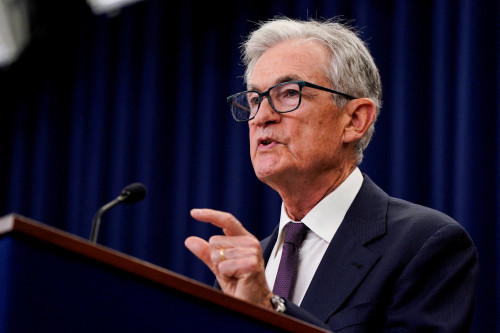(Fixes spelling error in headline)
By Michael S. Derby
(Reuters) -Federal Reserve Chair Jerome Powell said on Tuesday the end of the central bank’s long-running effort to shrink the size of its holdings, widely known as quantitative tightening, or QT, may be coming into view.
Given the central bank’s long-running goal of leaving enough liquidity in the financial system to allow for firm control of short-term rates and normal money market volatility, Powell said “we may approach that point in coming months, and we are closely monitoring a wide range of indicators” to know if that has happened.
His comments came from the text of a speech prepared for delivery before a gathering held by National Association for Business Economics in Philadelphia.
“Some signs have begun to emerge that liquidity conditions are gradually tightening, including a general firming of repo rates along with more noticeable but temporary pressures on selected dates,” Powell noted.
The QT process, which has been running since 2022, is designed to remove excessive amounts of liquidity the Fed added to financial markets during the COVID-19 pandemic. Large-scale purchases of Treasury and mortgage bonds were aimed at stabilizing markets and providing stimulus when the Fed’s short-term rate target was at near-zero levels.
The asset buying helped Fed holdings more than double to around $9 trillion. Since 2022, allowing a set amount of bonds to mature and not be replaced has helped take the Fed balance sheet down to $6.6 trillion.
It’s unclear how much farther the Fed can go with QT but some officials have said there remains plenty of liquidity in the financial system, suggesting they can press forward with QT without unsettling money markets.
Powell did not say how far the Fed would be able to shrink its holdings. But he did say that thus far, “the bottom line is that our ample reserves regime has proven remarkably effective for implementing monetary policy and supporting economic and financial stability.”
Powell also cautioned against removing the Fed’s interest-paying powers that enable its rate control toolkit to work effectively, noting that losing the power would lead to significant stress in financial markets.
Powell also said “our experience since 2020 does suggest that we can be more nimble in our use of the balance sheet” in the future.
(Reporting by Michael S. Derby; Editing by Andrea Ricci)


